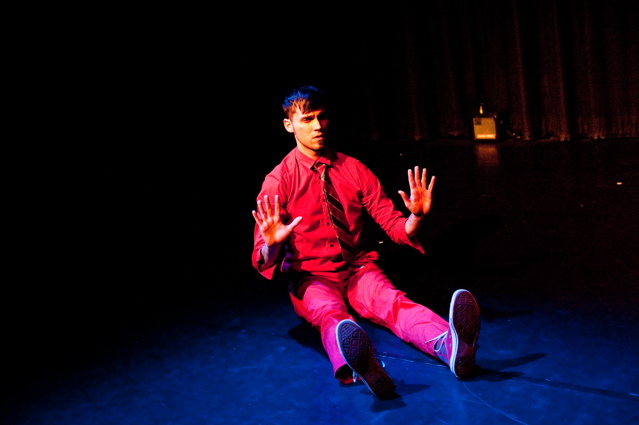by Jamie Benson
Lights come up on a lone figure, the one burdened with putting a trance over a packed house of smart phones. It’s a tall order to be sure. You don’t just have to dazzle, you have to captivate, ooze an indisputable it-factor that dares an audience of TV brains to look away, as if they could. The best/worst part is that you probably put yourself in the position to be this dance mystic. It’s your fault.
It’s your solo after all.
In an attempt to simplify my life as a choreographer (Ha!), I recently dove headfirst into the idea of making new solos. This was after previously doing a lot of ensemble pieces. It’s more freeing and more terrifying than ever. You’ve been there right? (Or will be.) Let’s have some group therapy real quick and see if we can come out the other end a little wiser, a little more capable of entrancing our next packed house. Game? Good.

Potential Pitfall: How Does It “Read” (a.k.a Do I look nuts?)
It can be tricky to clearly represent the source of whatever emotion one is exploring as a soloist and harder to suss out how it might “read” to an innocent audience-goer. There’s a more immediate response when working with other performers. They laugh when it’s funny, look at you cross-eyed when it’s too complicated or unintentionally awkward, and so on and so forth. As audience members, we’ve all experienced that performance where a soloist goes from poised dancer to insane person in seconds flat. As choreographers we think we know how something looks from the outside because we feel it so deeply. But as an audience member, one can become perplexed and feel alienated really fast if there’s no immediate access point, such as a topical reference, a common emotional gesture, something. Even if we deliberately create space for the audience to make their own choices about what we’re doing, our job is still ultimately to communicate something through movement.




